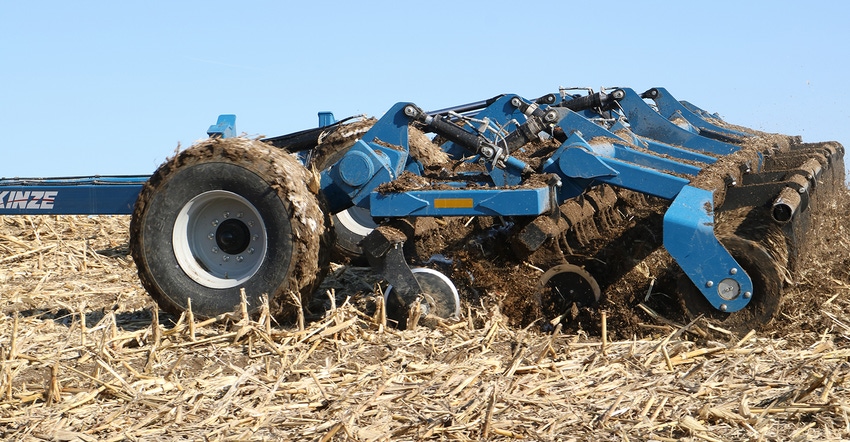January 28, 2019

Sponsored Content
Proper seedbed preparation each spring helps promote healthy plant emergence and strong, year-long crop performance. As farmers get ready for the 2019 planting season, spring tillage can be an effective tool to support this objective.
“Now is a great time to evaluate your soil conditions and make a plan for spring soil management,” says Justin Render, marketing product specialist with Kinze Manufacturing. He notes that spring tillage can efficiently address a variety of field issues, including:
Warming and drying cooler, wetter soils, including poorly drained fields.
Incorporating a herbicide or fertilizer application.
Incorporating lodged crops that were not taken care of in the fall.
Taking out first weed flush.
Fixing ruts from wet fall field work.
Seed bed preparation.
Render says when using tillage, caution is necessary to reduce the risk of soil compaction.
“It’s important to keep in mind that tillage equipment has the potential to cause compaction if you work your soil when it is too wet,” he warns. “If tillage is used to dry the soil’s surface, it can be tempting to jump the gun and not wait long enough for the soil to dry, which can result in compacted subsurface soil layers.”
The greatest probability for causing soil compaction takes place a few days before the soil is dry. Render shares two simple checks from Iowa State University Extension Soil Management Specialist Mahdi Al-Kaisi to help determine if fields are dry enough.
Avoid entering a field if the drainage tiles are still running, which means the soil is above field capacity.
Inspect the field and make sure that soil moisture is at or below field capacity by taking a handful of soil and squeezing it in your palm. If you notice a trace of moisture in your palm, it is too wet to enter the field.
Hybrid horizontal tillage
Render says that a newly emerging tillage segment, known as hybrid horizontal tillage, offers additional benefits for farmers. An example is Kinze’s new Mach Till product line, which combines some of the benefits of conventional discs, vertical tillage and soil finishing products into one versatile tool.
“It integrates the features of high speed, good soil finish and uniform residue management in various soil types for spring seedbed preparation as well as fall primary tillage,” Render explains. “Mach Till cuts and throws the soil at an angle to avoid creating a smear or compaction layer in the soil, and then mixes the soil and residue together.”
He adds that the corrugated rubber roller on the back of the machine sheds soil and breaks up larger clods while gliding through the field. Other agronomic benefits demonstrated through field testing include increased water absorption and uniform storage into the lower soil layers, faster germination and erosion minimization.
Four Mach Till models are available for the 2019 season. Additional information is available from Kinze dealers and at Kinze.com.
About the Author(s)
You May Also Like




